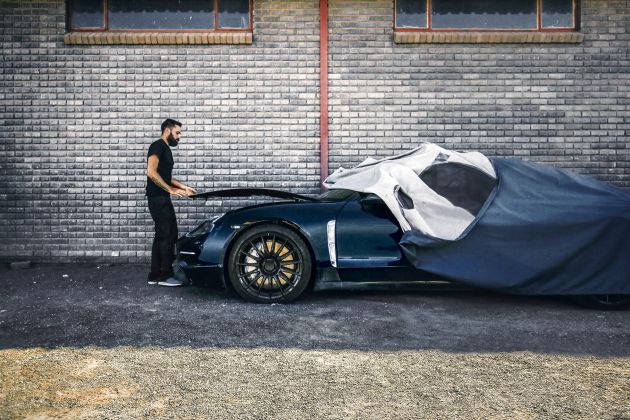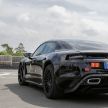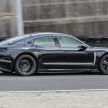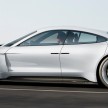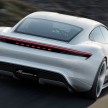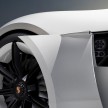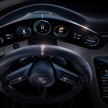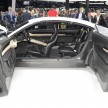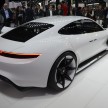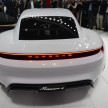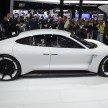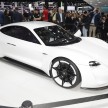Porsche has released early details for the Taycan, and has confirmed that its all-electric model will boast a maximum output figure of over 600 PS or 590 hp (440 kW) courtesy of two permanently excited synchronous motors (PSM). It will have a range of over 500 km from its 800-volt battery and electric drive architecture, and at full tilt, will run the Taycan a 0-100 km/h time of 3.5 seconds, and 200 km/h in under 12 seconds.
Each of the two motors is mounted on each axle of the Taycan, and can generate a permanent rotary motion that can be applied at any time without needing to be restarted. This is achieved by having the a permanently magnetised rotor forced into its rotating motion by the stator’s magnetic field.
The PSMs convert electricity into motive power with great efficiency, smoothness and sustained output while generating relatively little heat, says Porsche. The PSMs also enable a compact design, which makes it possible for Porsche to make the the motors and batteries smaller and lighter whilst attaining the same power figures, said Heiko Mayer, drive unit project leader at Porsche.
“To save even more space, the electric motors’ solenoid coils feature a so-called hairpin technology design. The coils are made of wires that aren’t round, but rather rectangular,” said Naser Abu Daqqa, director of electric drive systems at Porsche. This method enables more tightly-packed wires, and more copper can be put into the coil machines, thereby increasing the motors’ outputs for a given volume, Porsche added.
The Taycan’s power electronics have also been fine-tuned for efficiency. The inverters that convert the battery’s power from DC to AC work not with a fixed pulse frequency, but rather with a steplessly variable pulse frequency, which enables the motors to run at their optimal operating points, said Mayer.
Meanwhile, temperature sensors monitor cooling needs in real time, and software directs cooling water to the required areas. For example, when the driver summons full ‘throttle’, the car’s cooling systems step up as well, in order to ensure constantly available power. Another benefit of using 800-volt technology is that the usage of thinner cables also saves weight, Porsche notes.
The nature of lithium-ion batteries used in EVs meant that it was a great challenge getting the battery to use its full capacity for charging and discharging over a wide range of temperatures, said Porsche. The solutions, the German automaker said, include an intelligent charging protocol and an efficient heat exchanging system that gets the batteries up to operating temperature, and conversely cooled under heavy loads.
Approximately 40 specialist staff built the Taycan prototypes at Porsche, and a total of “three figures worth of prototypes” have been built to date, the company said. As it stands, the Taycan has already attracted interest from keen customers, which could mean the Taycan’s eventual debut is looming.
GALLERY: Porsche Taycan
GALLERY: Mark Webber tests the Taycan
GALLERY: 2015 Porsche Mission E concept
Looking to sell your car? Sell it with Carro.

